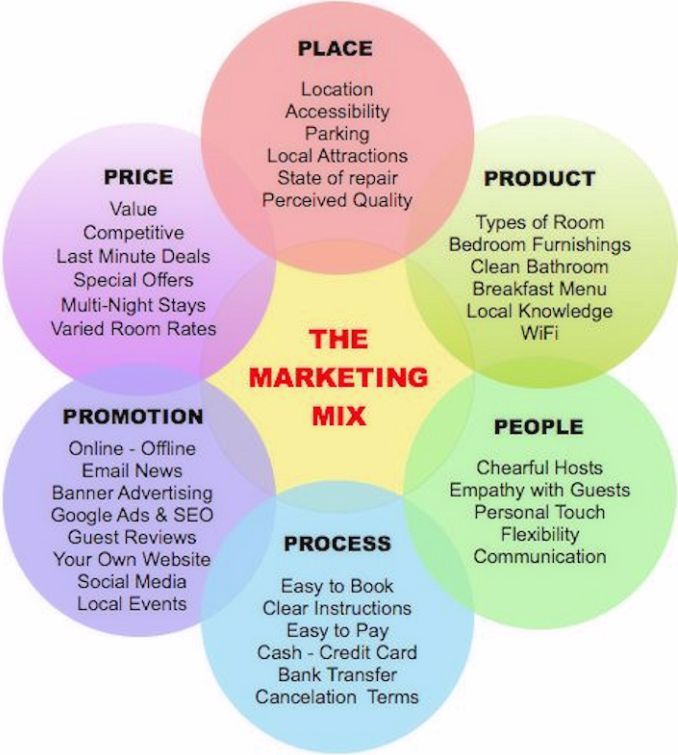
The marketing mix easily explained: product, price, people, promotion, publicity, place, process.
Transforming a brand into a socially responsible leader doesn’t happen overnight by simply writing new marketing and advertising strategies. It takes effort to identify a vision that your customers will find credible and aligned with their values.
Simon Mainwaring
Marketing is the devil.
Billy Bob Thornton
Never forget that you only have one opportunity to make a first impression – with investors, with customers, with PR, and with marketing.
Natalie Massenet
Marketing is what gets you noticed, and that side of it something – this side of it, if you like, doing interviews – is the side of it that I least enjoy, and yet is 50% of the project.
Rowan Atkinson
Marketing and press kicks up dust. It gets in your eye, and then you’re not focusing on the product.
Jan Koum
The Marketing Mix.
The marketing mix covers all the activities normally associated with marketing. These are often known as the 4Ps: • Product: finding the right product or combination of products for that market (through research, design and development); • Price: deciding the most profitable price possible, bearing in mind the competition and demand; • Place: making the product available when and where necessary; • Promotion: persuading customers to buy the product, with suitable means of communication.
Product. Branding and packaging are two aspects of marketing strategies that consumers hardly ever notice but that serv to differentiate products, which may in fact be very similar. Branding Brand-naming agencies specialise in evaluating the product, the image the company wants to project to the consumer (perhaps its high-tech or homely nature, its price advantage, or style) and finding the best name for it.
A good brand name should be memorable and appropriate, it should be pronounceable and hay no unpleasant connotations in any relevant language or culture where the product may he sold. Successful brand names are often the most important asset} a company may have as consumers will often pa; a lot more for a brand that has a good reputation. Since it is very difficult, time-consuming and expensive n create successful new brands, companies often find it quicker and cheaper to take over companies whose finance may not be in great shape, but whose products are well-known to consumers.
Packaging The type of packaging a product is sold in is determined by several factors: what best protects the characteristics of the product, what is perceived by the consumer as being practical or attractive, what the best size of packaging is for that product, how the product may be made to look different from its competitors.
Price. Good marketing means putting a product on the market at a price that is competitive (so in line with what competitors are charging), but still profitable. The final price depends not only on production and marketing costs, but also on the company’s general strategy: there are a lot of reasons for deciding on one price rather than another.
Pricing strategies Definitions. Loss leaders – products sold at less than cost to attract customers to buy other, more profitable products. Capturing pricing – selling the equipment cheaply and the consumable material necessary at a high price. Cost-plus pricing – price based on costs and a profit margin. Market-led pricing – setting prices according to competitors’ pricing.
Market-oriented-pricing – used to influence customer behaviour. Penetration pricing – cheap initial prices to gain market share. Market skimming – charging a high initial price for an innovative new product.
Place. The “right place” is where and how you sell your product. You have to decide whether you want to distribute it directly to consumers (for example, through the Internet), or through wholesalers, agents or retailers. The choice will depend on the type of consumers you are targeting, your competitors’ choices, and your company’s resources (what you can afford).
Promotion. Promotion is used to: • launch new products; • increase sales of existing products; • improve the company’s image and/or strengthen its brand, (or even to change it). Often more than one type of medium will be used.
Informational items. These make up the company’s official face. Information about a company is regularly circulated in letterheads, business cards, on panels on the sides of company vehicles, in leaflets, flyers and catalogues. Public relations (PR). Another “informational” way of promoting a product, brand or the company is through public relations. PR can be in the form of press releases, sponsorships, advertisements (also called ads or adverts), etc.
Advertising Advertisers choose from the large variety of available means the medium which best delivers their message to potential customers in the most cost-effective way. This can be done in various ways. There is usually one primary medium, e.g. television or the press, which is used to lead the campaign, and one or more other means support the campaign (secondary media). These could be billboards (cartelloni pubblicitari) or the radio, etc.
Read more about these topics downloading English Living Commerce in Summaries
Other pages on the topic:
Universal Marketing Dictionary


